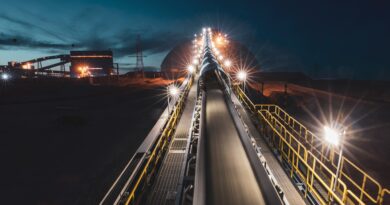Tsumeb smelter expansion project
Dundee Precious Metals Tsumeb (DPMT) is proposing to expand its current Tsumeb Smelter in order to increase the copper concentrate throughput capacity from 240 000 tons per annum (tpa) to 370 000 tpa. All the required new smelter and infrastructure components would be constructed within the current smelter footprint. DPMT appointed SLR Environmental Consulting (Namibia) (Pty) Ltd to undertake the required Environmental and Social Impact Assessment (ESIA) Amendment process for the proposed project.
Following the comment period on the 2019 Revised ESIA Report, the Comments and Responses Report was updated and appended to a final version of the ESIA Report which has been submitted to the Namibian Ministry of Environment and Tourism (MET) for decision-making.
The Tsumeb smelter was constructed in the early 1960’s to process concentrate from the Tsumeb copper mine and other mines in the country. It is linked by rail to the Atlantic port of Walvis Bay in Namibia.
The facility consists of a primary smelting furnace the Ausmelt furnace, two Peirce Smith Converters, bag houses and cooling towers, a slag milling plant, two high voltage distribution sub-stations, a materials handling facility, two oxygen plants, a fume extraction system and a sulphuric acid plant. The smelter employs approximately 800 people.
The smelter is one of only a few in the world that can treat complex copper concentrates. Blister copper and sulphuric acid are smelter products. The blister copper is delivered to refineries in Europe and Asia for final processing to copper metal. Sulphuric acid is a critical component in the mining industry particularly for uranium and copper production businesses. Thus, the smelter can take a by-product of copper and turn it into something of value for Namibia.
The Tsumeb smelter produces 98.5% pure copper blisters and with its ability to treat complex copper concentrates is transitioning from a captive smelter, receiving mainly Dundee concentrates into a toll treatment facility with brown-fields expansion potential.
The Ausmelt furnace was converted from a lead to a copper smelting vessel in 2010 and is the only primary smelting vessel after the decommissioning of the Reverberatory furnaces in 2013. A new Oxygen Plant was commissioned in February 2014 to increase the efficiency of the furnace and delivers up to 405 tonnes of oxygen per day. This increase allowed operating rates to move from 150,000t/a, of concentrate to 240,000t/a, with sufficient oxygen for an ultimate capacity of 370,000t/a subject to additional plant changes. Fume capture hoods and baghouses to alleviate release of arsenic containing fugitive gasses to atmosphere was installed in 2012 and 2013.
A sulphuric acid plant was commissioned in 2015, the sulphuric acid produced is sold to Rossing Uranium and Tschudi Copper in Namibia. Two new Peirce Smith copper converters were commissioned in the first quarter of 2016. The new copper converters are fitted with tight sealing water-cooled primary hooding as well as secondary hooding to minimize the uncontrolled release of fugitive gas containing SO2 into the atmosphere. The off-gas from the Ausmelt furnace and the Peirce Smith converters are both treated in the sulphuric acid plant removing sulphur dioxide from the off-gas before the cleaned gas is vented into the atmosphere.




